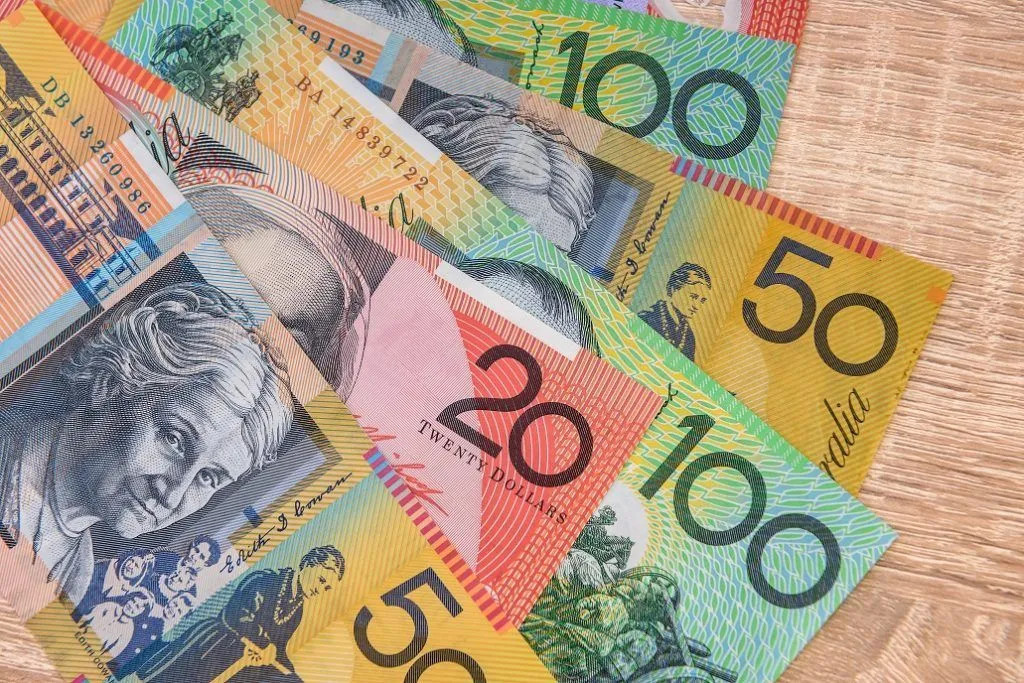The Australian Dollar (AUD) depreciates against the US Dollar (USD) following the release of downbeat Judo Bank Purchasing Managers Index (PMI) data on Monday. The swift decline in riskier assets is driven by central banks’ rapid policy adjustments and increasing fears of a hard landing for the US economy.
Additionally, the AUD receives pressure as the second-quarter inflation data has diminished expectations for another rate hike by the Reserve Bank of Australia (RBA) at its policy meeting on Tuesday. Markets estimate an RBA rate cut in November, a move anticipated much earlier than previously forecasted for April next year. These factors are contributing to the downward pressure on the Australian Dollar and undermine the AUD/USD pair.
China’s Caixin Services PMI rose to 52.1 in July, from June’s 51.2 reading. The index has exceeded the market expectation of a 51.4 reading. Since both nations are close trade partners, volatility in the Chinese economy can significantly impact the Australian market.
The downside of the AUD/USD pair could be restrained as the US Dollar lost ground after the downbeat US labor market data released on Friday. This has boosted the expectation that the US Federal Reserve (Fed) would cut its interest rate in September. Traders await ISM Services PMI for July, which is expected to rise to 51.0 from 48.8 prior.
Daily Digest Market Movers: Australian Dollar declines following the downbeat PMI
- The Judo Bank Australia Composite PMI dropped to 49.9 in July from 50.2 in June, falling below the neutral 50 mark for the first time since January. The Services PMI decreased to 50.4 in July from 51.8 in June. While this represents the sixth consecutive month of expansion in services activity, the growth rate was marginal and the slowest observed in this sequence.
- US Nonfarm Payrolls (NFP) increased by 114K in July from the previous month of 179K (revised down from 206K). This figure came in weaker than the expectation of 175K, data showed on Friday.
- US Average Hourly Earnings eased to 0.2% month-over-month in the same reported period, below the market consensus of 0.3%. On an annual basis, the figure decreased to 3.6% from the previous reading of 3.8%.
- US ISM Manufacturing Purchasing Managers Index (PMI) tumbled to an eight-month low of 46.8 in July, compared to the previous 48.5 reading and the forecasted move up to 48.8.
- China’s Caixin Manufacturing Purchasing Managers Index (PMI) posted a reading of 49.8 for July, falling short of the expected reading of 51.5 and the previous reading of 51.8.
- The Australian Bureau of Statistics (ABS) reported a trade surplus of 5,589 million for June, surpassing the anticipated 5,000 million but still below the previous reading of 5,773 million.
- During a press conference, Federal Reserve Chair Jerome Powell stated that a rate cut in September is “on the table.” According to Reuters, Powell added that the central bank will closely monitor the labor market and remain vigilant for signs of a potential sharp downturn.
Technical Analysis: Australian Dollar hovers around 0.6500
The Australian Dollar trades around 0.6500 on Monday. The daily chart analysis shows that the AUD/USD pair consolidates within a descending channel, indicating a bearish bias. The 14-day Relative Strength Index (RSI) is hovering below the oversold 30 level, which suggests a potential for an upward correction.
The AUD/USD pair could find immediate support around the lower boundary of the descending channel at the throwback support of 0.6470 level.
On the upside, resistance is first encountered at the channel’s upper boundary, around 0.6520, followed by the nine-day Exponential Moving Average (EMA) at 0.6544. The next significant resistance is at 0.6575, where the “throwback support turned resistance” is located. A breakout above this level could propel the AUD/USD pair toward a six-month high of 0.6798.

